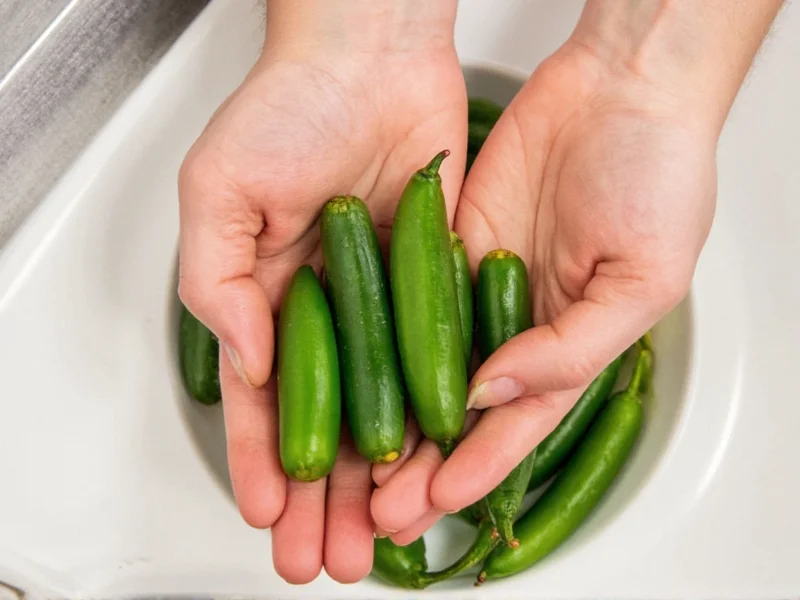Understanding Why Jalapeño Burns Are So Persistent
When you handle jalapeño peppers, you're coming into contact with capsaicin—the oily compound responsible for their heat. This substance binds to pain receptors in your skin, causing that familiar burning sensation. What makes capsaicin particularly stubborn is its chemical nature: it's hydrophobic (water-repelling) and lipophilic (oil-loving). This explains why simply rinsing with water often makes the burning worse by spreading the oil around without actually removing it.
Science-Backed Methods for Removing Jalapeño Residue
Understanding capsaicin's properties helps explain why certain removal methods work better than others. Below are the most effective approaches, ranked by effectiveness based on chemical principles:
| Method | Effectiveness | Time Required | Accessibility |
|---|---|---|---|
| Oil followed by soap | ★★★★★ | 2-3 minutes | High (kitchen items) |
| Alcohol solutions | ★★★★☆ | 1-2 minutes | High (common household) |
| Vinegar soak | ★★★☆☆ | 5-10 minutes | High (kitchen staple) |
| Baking soda paste | ★★★☆☆ | 5 minutes | High (kitchen staple) |
| Water alone | ★☆☆☆☆ | 1 minute | High |
Step-by-Step Guide to Remove Jalapeño Burn
Most Effective Method: Oil and Soap Technique
This approach leverages the "like dissolves like" principle of chemistry. Since capsaicin is oil-based, you need an oil to dissolve it first, then soap to wash both oils away.
- Apply a generous amount of cooking oil, olive oil, or even petroleum jelly to your hands
- Rub the oil thoroughly over all affected areas for 30-60 seconds
- Use a paper towel to wipe away as much oil (and dissolved capsaicin) as possible
- Wash hands with dish soap and warm water for at least 20 seconds
- Rinse thoroughly and repeat if burning sensation persists
Quick Relief Method: Alcohol Solution
When you need immediate relief, alcohol-based solutions work faster than oil methods:
- Apply hand sanitizer (at least 60% alcohol) or rubbing alcohol to hands
- Rub thoroughly for 30 seconds, focusing on fingertips and under nails
- Rinse with cool water (not hot, which can open pores further)
- Follow with moisturizer as alcohol can be drying
What Not to Do When Handling Jalapeño Burns
Avoid these common mistakes that can worsen the burning sensation:
- Don't use only water - Water spreads the oil without removing it
- Avoid touching your face - Especially eyes, nose, or mouth before washing hands
- Don't use hot water - Heat opens pores, allowing more capsaicin absorption
- Don't scrub vigorously - This can damage skin and increase irritation
- Avoid petroleum products like Vaseline first - They trap capsaicin against skin
Preventing Jalapeño Burns During Future Handling
The best solution for how to wash jalapeño off hands is to avoid the problem entirely:
- Wear disposable gloves when handling hot peppers
- Use separate cutting boards for peppers
- Wash knives and surfaces with soapy water immediately after use
- Consider using a food processor with a pusher instead of hands
- Keep a bottle of hand sanitizer nearby when cooking with peppers
When to Seek Medical Attention
While jalapeño burns are usually temporary, consult a healthcare provider if you experience:
- Severe pain lasting more than 24 hours
- Signs of skin damage like blistering
- Burning sensation in eyes that doesn't improve with flushing
- Difficulty breathing after handling peppers











 浙公网安备
33010002000092号
浙公网安备
33010002000092号 浙B2-20120091-4
浙B2-20120091-4